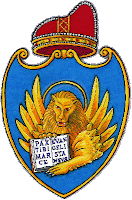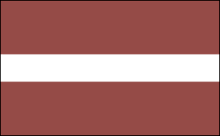NOWE WYDAWNICTWA! TAJEMNICZE MIASTO - TOM 1 ORAZ PRZEWODNIK PORÓWNAWCZY CZ.
2
-
[image:
http://www.cmsklep.eu/michal-szymanski-warszawa-tajemnicze-miasto-stara-warszawa-p-137.html]
[image:
http://www.cmsklep.eu/warszawa-pozostale-d...
niedziela, 13 maja 2012
JABŁONNA
Wyświetl większą mapę
Jabłonna to niewielka wieś pomiędzy Warszawą i Legionowem. Znana była już w XVIII w., kiedy prymas Michał Poniatowski wybudował sobie tutaj pałac wraz z dużym parkiem. W czasie II wojny światowej we wsi mieściły się obozy jenieckie, a po wojnie Jabłonna zasłynęła jako centrum produkcji kwiatów, warzyw i owoców.
Pałac Poniatowskiego z 1775-9
Poniatowski's Palace from 1775-9
Altana chińska
Chinese Pavilion
Łuk Poniatowskiego
Poniatowski's arch
Resztki stajni
Stable's leftovers
Romantyczna grota w parku
Romantic grotto in the park
Kościół Matki Boskiej Królowej Polski z 1925. Zniszczony w czasie wojny, odbudowany w latach '50.
Church of St. Mary the Queen of Poland from 1925. It was destroyed during the II world war, rebuilt in the '50s.
sobota, 12 maja 2012
KOURION
Wyświetl większą mapę
Kourion to obecnie stanowisko archeologiczne z osadą sięgającą XIV w. pne. Miasto brało udział w kilku wojnach, m.in z Persami, czy Aleksandrem Wielkim. Miasto opustoszało w VII w. po najeździe Arabów. Do dziś zachowała się świątynia Apollina, amfiteatr i część osady. Odkryto również piękne mozaiki. Obok miasta jest cudowna plaża.
Kourion is now an archaeological site with a settlement reaching the XIV century BC. The city took part in several wars, m.in of the Persians, or Alexander the Great. The city was deserted in the VII century after the invasion of the Arabs. To this day, what remained is the temple of Apollo, an amphitheater and a part of the settlement. It was also discovered a beautiful mosaic there. In addition to the city there is a wonderful beach.
SŁOWIŃSKI PARK NARODOWY
Wyświetl większą mapę
Powstał w 1967, aby chronić unikalne ruchome wydmy. Najwyższym wzniesieniem jest Góra Łącka, mająca wysokość 42 m n.p.m., a przemieszcza się z szybkością od 3,5 do ok. 10 m na rok.
Słowiński National Park was created in 1967 to protect the unique shifting sand dunes. The highest peak is Mount Lacko, with a height of 42 m above sea level, and it moves at a speed of 3.5 to about 10 m per year.
WENECJA \ VENEZIA \ VENICE
Wyświetl większą mapę
Wenecja to słynne miasto na wyspach (270.000 mieszkańców), które przez ponad 1000 lat było stolicą wielkiej Republiki Weneckiej. Miasto założono w 452 i szybko wyzwoliło się spod opieki Bizancjum, działając na zasadzie państwa-miasta. W latach 726-1797 Republika Wenecka panowała na Morzu Śródziemnym, kontrolując większość wysp akwenu, opierając się atakom Turków. Kres najdłużej istniejącej republice w historii położył Napoleon, podbijając ją w 1797 i włączając w granice Austrii. W XIX w. Wenecja znalazła się we Włoszech i jest ich miastem do tej pory.
Venice is a famous city on the islands (270 000 inhabitants), which for more than 1000 years was the capital of the great Venetian Republic. The city was founded in 452 and quickly got independent from the custody of the Byzantine Empire, acting as a city-state. In the years 726-1797 the Republic of Venice ruled the Mediterranean Sea, controlling most of the islands in the reservoir, based on the attacks of the Turks. The longest existing republic in history was taken by Napoleon, who conquered it in 1797 and included in the borders of Austria. In the XIX century, Venice was in Italy and it still remains in that country.
Wenecja widoczna z promu z kościołem St. Georgio Maggiore z 1610
Venice seen from the ferry with St. Georgio Maggiore church from 1610
Santa Maria della Salute z 1630, postawiona jako wotum dziękczynne za ratunek przed dżumą.
Santa Maria della Salute from 1630, built here to dedicate to the St. Mary of our Health to thank her for saving from the plague.
Canale Grande
Po lewej uniwersytet Ca Foscari
Ca Foscari University on the left
Most Rialto z 1588
Rialto bridge from 1588
Okolica mostu zwana również Rialto
The bridge's surroundings are also called Rialto
Na moście
On the bridge
Torre dell'Orologio - wieża zegarowa z 1506. Zegar pokazuje pory roku, fazy księżyca i zodiak.
Clock tower from 1506. The clock shows seasons of the year, moon phases and zodiak
Prokuracja z XVI w., gdzie mieszczą się główne urzędy miasta
Procuratie from the XVI c. with the most important municipal offices inside
Pałac Dożów z 1442 na placu św. Marka. Tu mieszkali władcy Republiki weneckiej.
Doge's palace from 1442 on St. Marco's square. That was the residence of dukes of Venice Republic.
Most Westchnień (Ponte di Sospiri) z 1614. Tym mostem prowadzono skazańców do więzienia.
Bridge of Sighs from 1614. The convicts, that were going to the prison, were crossing this bridge to get to the jail.
Bazylika św. Marka z 832, do której kupcy weneccy wykradli relikwie św. Marka z Aleksandrii.
St. Marco's basilica from 832, where the venetian traders put the remains of St. Marco, which they had stolen from Alexandria
Subskrybuj:
Komentarze (Atom)
























































































































